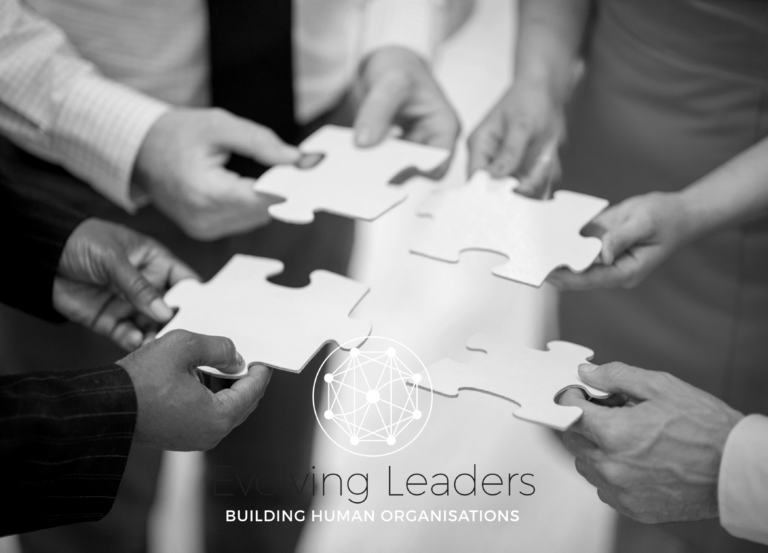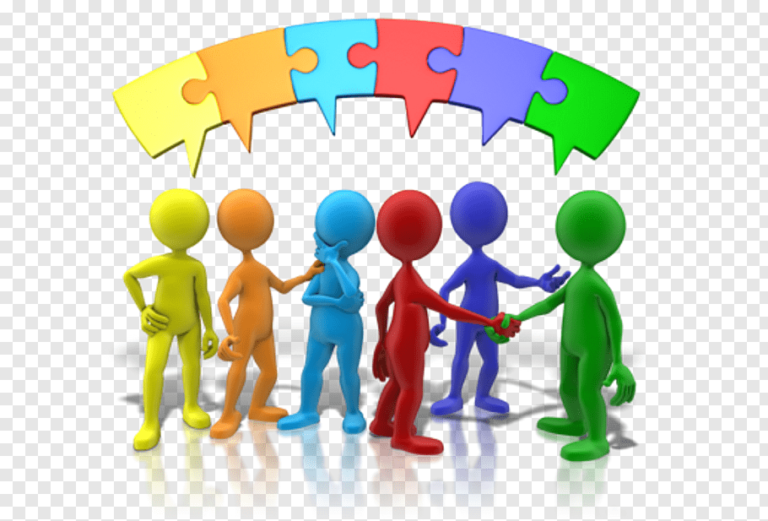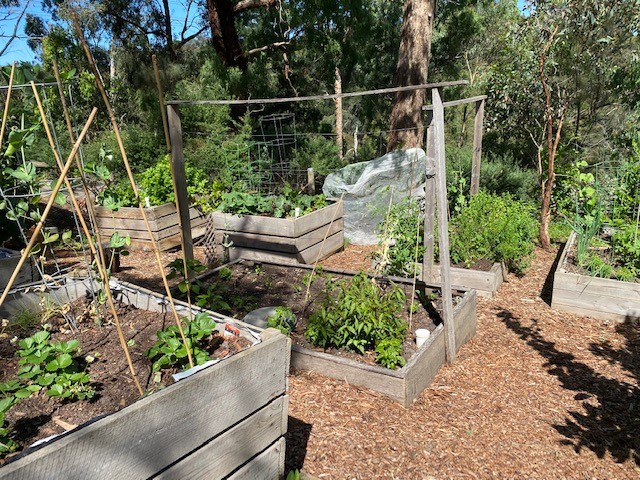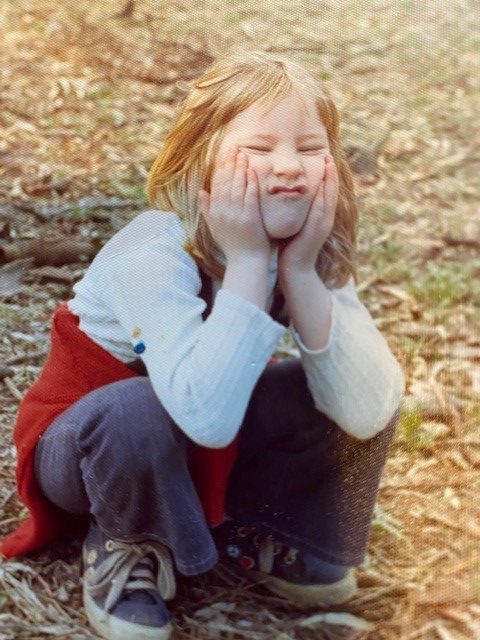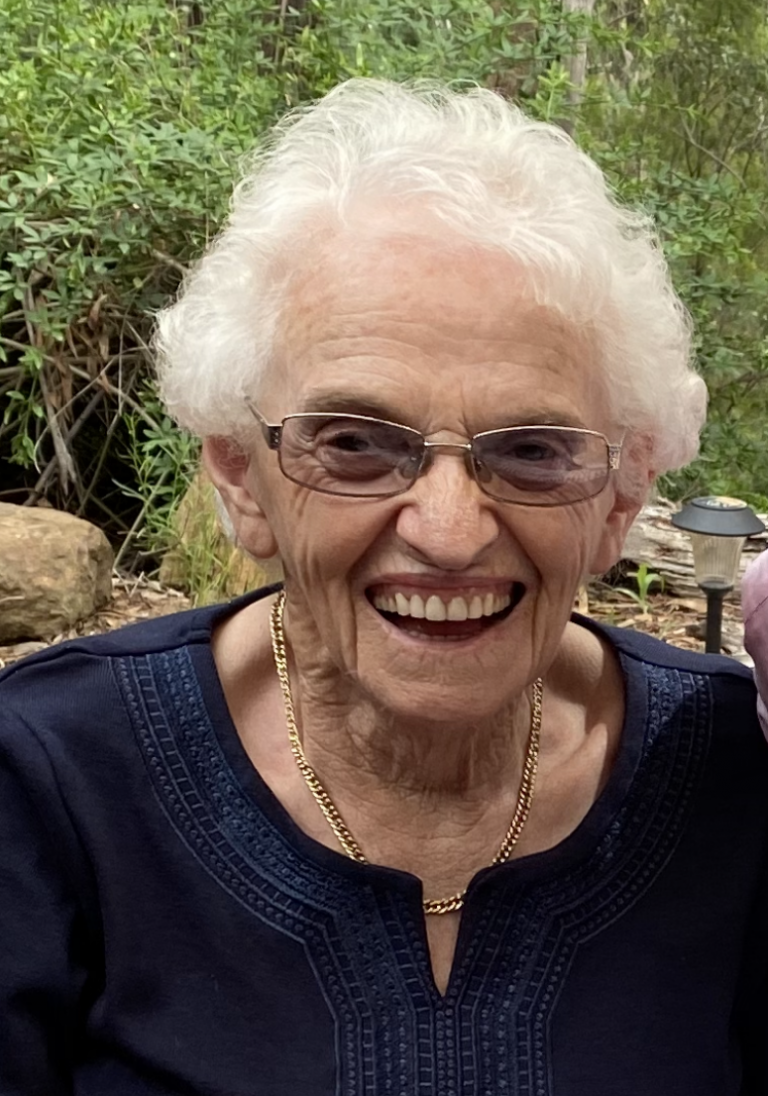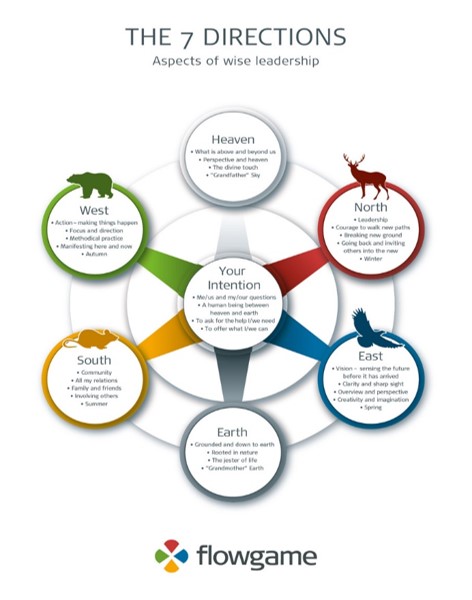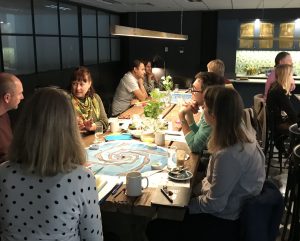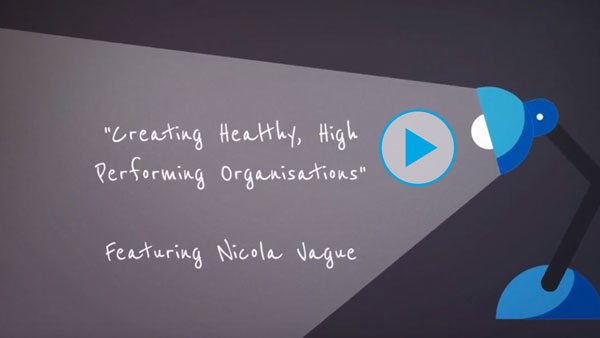When you arrive at graduation day and can’t get into the room because participants are getting everything set up for the presentation of their learning it’s a good indication that our job was done!
What an absolute privilege it has been to work alongside my dear friend and colleague Hamish Riddell to support leaders with taking the next step in their own evolution through our Leading Change Program. We were blown away at the level of commitment of these leaders to learning, living and embodying the Six Keys to Leading Positive Change. To work with these leaders and to witness the growth that happened over our eight months together was nothing short of exquisite!
‘Not many times we are offered the opportunity to reflect upon self as strategy to develop your leadership skills. Nicola & Hamish Evolving leaders program is a great example of how sustainable change can be embedded by knowing self first before bringing others into any potential corporate change. Highly recommended!’ – Vitor Rocha (Palliative Care Lead)
“I cannot speak highly enough of Nicola and Hamish – it was privilege to participate in the Leading Change program that they facilitated within our workplace. They are a dynamic duo with the extraordinary ability of being able to balance an abundance of knowledge and expertise in leadership development, with a genuine humility and an honest kindness capable of drawing the best out of program participants. Thank you Hamish – Thank you Nicola.
– Sue Wilson RN PhD Evaluation and Data Management Lead
Bookings are now open for 2023. You can find out more about Leading Change here.
This post introduces a short process to help you check -in on the health of your relationships so that you can bring back to sharp focus the people and relationships that matter most to you in your life and leadership.
In an earlier post I introduced this idea of how we need to be intentional in how we allocate our ‘mental real estate’ as it a finite and not infinite resource that we must use wisely. Amongst all of the competing demands, sometimes life bolts forward without us. When this happens we can lose focus of the relationships and people in our lives that matter most. Perhaps you can relate to this in your own life?
Part of self-leadership involves us slowing down enough to notice this has happened – and to intentionally check in on the ‘health’ of our relationships so that we can get clear on what needs to change to grow connection.
I want to share with you a process that I use in leadership workshops. It is designed to help you bring focussed attention to acknowledging and better understanding the health of your key relationships. Taking time to do this can be a powerful way of being a little more strategic on where to invest your precious time and effort, and to therefore better allocate your ‘mental real estate’. It can help you to cut out some of the noise and distractions and re-align your efforts to the things and people in your life that matter most.
I invite you to bring your own life circumstances and relationships into the arena here. Take out your notebook and complete the following short process:
1. Select 5-10 key relationships – can be a mix of work/home/other – key is that the relationships that are important for you in your work and life –and that they are ones that you are willing to intentionally focus on to grow and strengthen.
2. Rate the current ‘health’ of each relationship – based on your assessment of the level of trust ( a topic that we have not specifically covered here but one that I am sure you have a good sense of) that exists between you and the overall quality of each of these relationships (in terms of the level of health, transparency, openness and any other factor that you consider as important in your relationships). Allocate a current health rating if between 1 (a disaster) and 10 (couldn’t get any better) to each of the relationships.
3. Set aspirational target for each relationship – goal is not to get each relationship to 10 but determine where you would like/ and or need that relationship to be and a part of that will be factoring in which relationships are the most important to you.
NB. This is like your secret plan – it’s not something you would of course share with the people on here – it is about focusing your energy and attention and being intentional about the relationships that you want to grow.
4. Identify one specific action you will take to grow connection in each of these relationships and commit to a plan to make that happen.
What do you notice? How do you feel?
This exercise may bring up all sorts of things for you. Often people experience a gap between where they thought the ‘health’ of a key relationship was and where they find it actually is.This is not unusual when we move from autopilot to bringing focussed attention.
For one client what he realised is that he had been putting so much every and effort into a particular relationship and that it was not being reciprocated at all. He made a choice as part of this insight to back- off on this relationship and reallocate some of that energy and effort elsewhere.
Another client said she felt sick when she realised what she termed – ‘the sad health state’ of her relationships and felt a compelling need to bring greater energy and focus into immediately rectifying this situation. We explored the broader context around this situation which was connected to the leader being in a job that she was finding to consuming and her struggles with wellbeing. So for this leader, this self-discovery process left her considering what was enabling her and what was limiting her in terms of her current reality more broadly.
Through taking the time to bring awareness to the current ‘health’ of our relationships and connecting with how we would like this relationship to be, we are well positioned to take appropriate action to grow connection and to make better decisions and choices about our lives and leadership.
Wishing you happy, connected and healthy relationships. Please reach out if I can help in any way.
This post looks at the beliefs we hold through the lens of being like ‘organisms’ that are fuelled from the ‘evidence’ that we feed them. It provides you with a short process to surface the limiting beliefs that are getting in the way of a reality you want to create. It then invites you to identify a possibility-fueled belief to displace the one that is keeping you stuck and to get the structure and support in place to ‘feed’ this healthy belief to so that you can intentionally create the reality you desire.
We all have a set/series of base beliefs that control how we experience ourselves, others and the world around us. These beliefs can be either limiting or enabling and from that place they either take us away from the life we want to live or toward it. They tend to be ‘I am’ declared statements, for example:
- I am a good friend/ I am a bad friend
- I am lovable/ I am not lovable
- I am capable/ I am not very capable
- I am resilient/ I am not a resilient person
- I am worthy/ I am not worthy of (being happy, belonging to this group etc ).
As an example of a limiting belief, if we have a base belief that everything in life is scary, then when events and situations happen we are more likely to react to them from a place of fear. Because this belief that life is scary governs how we see the world, we aren’t able to respond to the same events and situations from a place of possibility.
Living organisms: a metaphor for beliefs
I was recently introduced to the idea of thinking about beliefs as being living organisms. This metaphor really resonated with me, so I wanted to share it with you. Just as organisms seek out and feed off the things that nourish them, our beliefs look for evidence to validate their own viewpoint. When a belief locates evidence to support itself, the belief (as the organism) becomes bigger and stronger. Let’s look at a short example of this.
In 1987, at the age of 17, I had an English teacher say to me, ‘You really don’t write very well, do you?’ Those eight words, almost a throwaway line on the day, stayed with me. They cemented a core belief in me that what she had said was true, that I am not good at writing. She was, after all, a highly qualified and experienced teacher of English (evidence to feed that belief).
Having accepted this belief was true and that there was nothing I could do about it, the belief continued to seek out and gather ‘evidence’ to support itself. It did this for the next 30 years. 30 years: that’s a very long time. I would write a personal message on a birthday card and immediately judge it as not very good. I would take hours and hours, beyond what was reasonable, to write an otherwise straightforward board report or business presentation. I would become annoyed with myself for my seemingly inept attempt to articulate how I was feeling in my own personal journal – something no-one else was ever going to read! All this ‘evidence’ continued to fuel this belief that I was not a good writer.
It took many years for me to really understand how accepting this fear-based belief as true was limiting me in the direction I wanted to head with my life and my business.
In 2017, at the age of 47, I made a clear decision. This belief had had power over me for too long. Sitting on the cusp of a massive growth edge, I nervously yet knowingly chose to put this belief into a metaphorical ‘backpack’. It was time to allow the internal voice of my own wisdom to be truly acknowledged and lead the way. That little voice inside me was telling me that I needed to write and share what I had learned with others. With the support and encouragement of David (a professional editor) by my side, I started my blog in 2018.
It wasn’t all smooth sailing by any measure. I recall a phone call from David after I had drafted my very first blog. Let me just say for various and very legitimate reasons it was scrapped altogether. A total disaster. But I had made a start. What could have been some new evidence to support the belief that I did not write very well, I chose to ignore rather than attach any weight to it. The exciting thing was that very soon I discovered how much joy I felt when I was writing. Before long, the writing was flowing freely and I had released a flow of material and insights that wanted to be shared.
Here we are in the third year of my blog and there’s plenty more to say yet! And there is a book on the way as well.
Turning fear-based beliefs into possibility-fuelled beliefs
Perhaps you have a belief that is getting in the way of a reality you want to create or a project you want to realise or a relationship you want to nurture? Can you pin it down? Can you identify how it’s reinforcing itself with self-fulfilling ‘evidence’?
The first step in a situation like this is to get clear about the reality that you want to create. You then need to understand what you have control over.
I really wanted to share what I had learned with others through writing a blog.
I had control over choosing a different belief. I had control over starting to write anyway. I had control over identifying and engaging the support that I needed.
The next step is to surface the beliefs that are keeping you from moving toward that reality.
I am not good at written expression.
Then choose a more helpful belief:
Possibility-fuelled belief: I am worthy of sharing my experience with others through writing a blog /I am able to be useful to others through my written expression/ I am capable of writing a blog that is worth reading.
Now, there are three things to bring this all to life:
- make a conscious choice to feed the new belief and starve the old belief
- get the support in place that you need to help you create your reality, and
- start to look for evidence to nourish the possibility-fuelled belief to become bigger and stronger
In my case, the old belief – I cannot write – no longer lives within me. As I somewhat nervously published my blog, putting it out into the world, magic started to happen. I received emails and phone calls from people thanking me for something I had written that had resonated for them. This became powerful ‘evidence’ that supported my new belief – I am capable of writing a blog that is worth reading.
Do you have a new reality that you want to create?
What do you have control over in this situation?
What fear-based belief/s are limiting you?
What is the new possibility-fuelled belief that you choose?
What ‘evidence’ do you already have that supports this new belief?
What support do you need to keep growing the ‘evidence’ that makes sure this belief thrives and fuels your desired reality?
______________________________________________________________________________________
Visit www.evolvingleaders.com.au to learn more about our Leadership Development Programs and Coaching.
There is a lot to navigate right now isn’t there? How are you holding up?
When Dan Andrews announced extensions of stage 4 restrictions for Melbourne Lockdown 2.0 on Father’s Day 2020, the news wasn’t unexpected. In some ways I let it wash over me that day. That night, however, I tossed and turned and did not sleep well.
Monday came around again and as I was looking down the barrel of another week of what felt at the time like Groundhog Day, I awoke feeling overwhelmed and not knowing how I or anyone else was going to endure several more weeks of lockdown. I felt heavy and stuck and I was unable, in that moment, to focus on anything other than doom and gloom.
To compound how I was feeling, I started to feel guilty about feeling that way. Given all that I have to be grateful for in my life I should be able to just think positive thoughts and get on with it.
How often do we give that advice to ourselves and offer or give that advice to others? It has its place but sometimes it’s not helpful and can even be harmful.
Not surprisingly this harsh inner-critic compounded how I was feeling. Luckily for me, with my husband working from home we had some extra time together over breakfast (one of the many gifts that isolation has given us). He was able to be present with me and just listened as I explained to him how I was feeling in that moment. I didn’t hold back and left no stone unturned. He didn’t try and ‘fix’ anything. He was present and he listened. I cried. He passed the tissues and he listened.
After the 10 minutes it took for me to do the offload, he said, ‘I am sorry that you are feeling that way’ and gave me a big hug.
You know what happened then? The veil of heaviness that had surrounded me began to lift. I felt so much lighter. I mustered up the energy for a walk and reflected on that little bit of ‘magic’ that had just transpired. I felt so much better in myself. I was able to refocus on my day and get on with what I had to get done.
I share this story as a reminder of how important it is that we acknowledge the full spectrum of how we are feeling and find a healthy way to express that. Especially at this time, but this is equally important in our day-to-day interactions, life and leadership.
We need to get rid of the story of judging feelings as being ‘good’ and ‘bad’ and learn to welcome and make space for them all. We need to re-frame this idea that we should always focus on the positive, especially when it is at the expense of putting a lid on our so-called ‘negative’ emotions.
I am not suggesting for a moment that we should wallow in self-pity and stay there. What I am suggesting is that if we simply try and put a lid on the things we don’t want to feel then they will stay stuck somewhere in our bodies, wreaking potential havoc there. And they will get a stronger grip on us and keep us stuck there for even longer.
If we can, on the other hand, give these ‘feelings’ what they need – which is often simply to be acknowledged – they can then move through us and we can regain clarity, calm and the perspective that we need to be able to move forward.
You can read the full poem here.
My questions to you:
Are you making space to express all aspects of how you are feeling?
Is there anything you can do differently in supporting others to help them make space for expressing all of how they are feeling?
Please take care. Look after your emotional landscape and of course at any stage you feel any emotion feels too intense for then please get professional support. https://www.ruok.org.au/findhelp
This post shares a personal story and suggests that every human being on the planet right now, in some shape or form, is facing into their own ‘growth edge’. It invites the reader to reflect on what they are noticing in themselves and others in terms of this personal learning and highlights that perhaps the luckiest people right now have leaders and organisations that are providing development and wellbeing support for their people.
Meet Elaine. She is my delightful 84-year-old mother-in law. Elaine left school at age 15 to help with home duties on the family farm and continued in that role all through motherhood and grandmother-hood.
In her lifetime, she has baked tonnes of lemon slice and the arguably the best chocolate cake ever. When she isn’t baking, she pours all her energy and focus into supporting her community and showering us – the family – with her love.
Throughout her lifetime, Elaine has felt no desire for, nor any reason to, use a computer or a smartphone. And so, in March 2020, as the world felt like it was closing in on all of us, we realised that that Elaine would soon be in total isolation. Without even the stilted connectedness the internet offers the rest of us, she would have very limited contact with her her family and friends, and we were concerned about the flow-on impact this would have on her overall wellbeing.
So, without further thought, we purchased her an iPad. In a curious way, one of the first questions she asked was, ‘Why is the keyboard not in alphabetical order?’ She had never used any sort of keyboard in her life, let alone an email address. How much we take for granted! This was completely uncharted territory for her.
The rest is history.
True to form, with her enthusiastic approach to a new challenge, she was up-and-running in no time. The pure delight we witnessed when Elaine had her whole family (across many geographical locations) in front of her on the first Facetime call is a precious moment that will stay in my heart forever.
If you had said to me six months ago that, in the year 2020, Elaine would be making Facetime calls, ordering her groceries and doing her banking online, I would have broken out in laughter!
But she was soon doing all of that. We are so proud of her.
Elaine’s story got me thinking about what the disruption of this year has meant to all of us in terms of the learning we have been somewhat forced to do or had to do in many ways. What became clear to me is that every human being on the planet right now has had to confront their own fear at some level and learn something new, or make some change that they would not have made without the pandemic.
No one is exempt. It has been, and continues to be, a true ‘growth edge’ experience for us all. (Read more about growth edge here)
Do you agree? Where have you noticed this happening?
What are you being asked to or forced to change at this time?
What is your personal growth edge right now?
Some examples from my own ‘growth edge backyard’ are:
- quickly getting up to speed and proficient at creating connection and engagement online so as to be able to effectively deliver team development via an online platform. Like many, I still really don’t like facilitating groups on Microsoft Teams, but at least I know how to do it.
- taming my voice in our family to allow each person an equal say in shaping the healthy boundaries needed for life in isolation in a household of five people (that is, learning to listen better and not assuming I always have the best answer)
- establishing a healthy and productive work rhythm by creating greater structure around my allocated working hours, which in my case means 90 minute cycles then taking a break (here is a great article on this topic).
Most clients that I am currently working with are struggling with many aspects of work and life – juggling home schooling, too many hours on Zoom and experiencing other financial and social pressures. It’s the norm rather than the exception right now.
What is being demanded of people by this pandemic in terms of growing and changing for many feels heavy and hard. I am also noticing, however, that the luckiest people during this time work in organisations and with leaders that recognise the need for, and are investing in, the wellbeing and development of their people. It is from this support base, that people can begin to make sense of themselves and their own experiences and begin to see some reward and celebration of their efforts on the other side.
The benefits flow on, as when this growth edge can be applied within a broader team context, it is even more powerful. As individuals grow and change and are able to be more vulnerable and courageous with themselves – as 84-year-old Elaine has demonstrated so well, and when they can do this with their teams as well, then team culture can grow in ways that are good for all.
Could you or your team do with support right now? Please get in touch to book your team development – delivered remotely of course.


